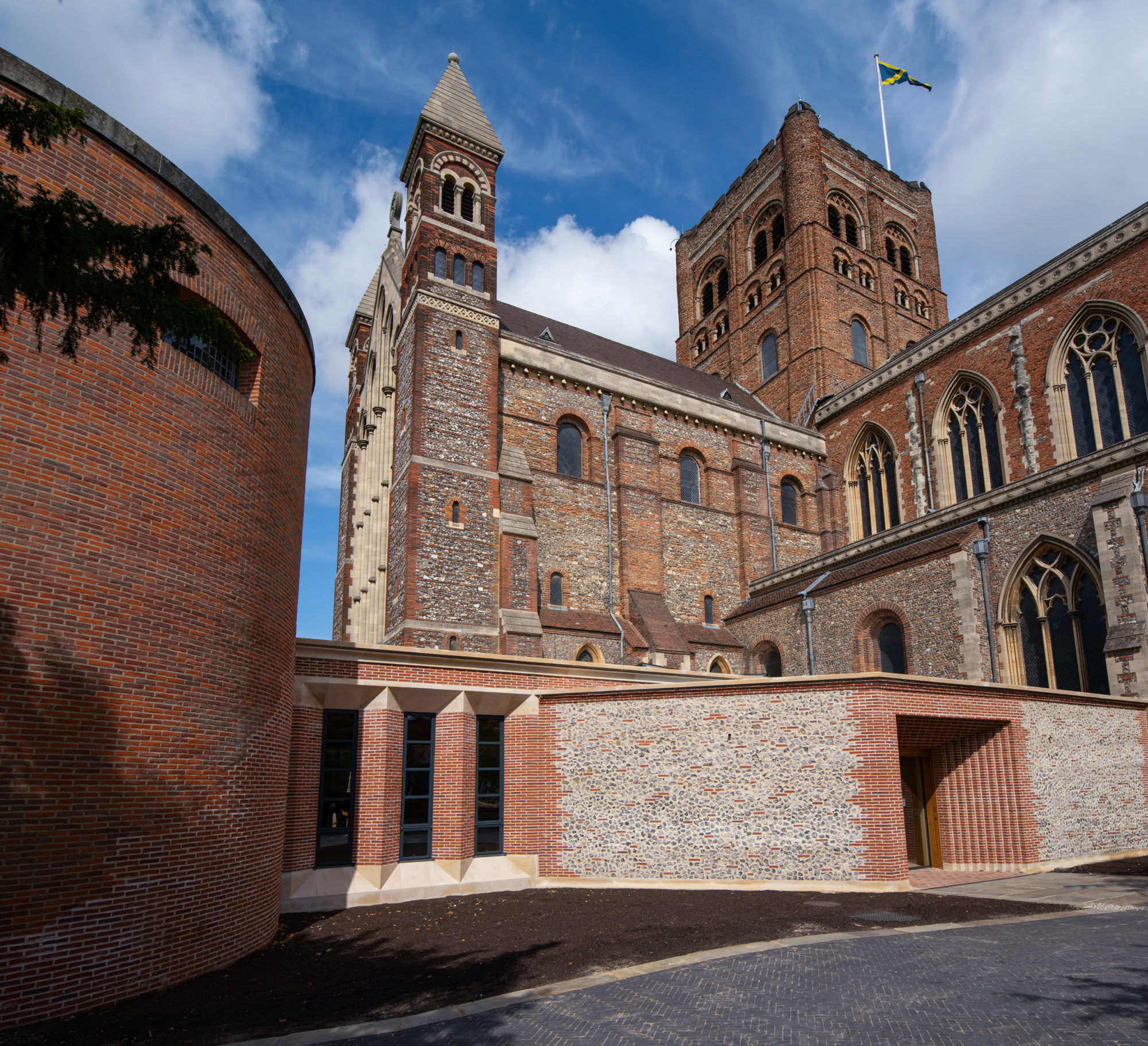Thomas Sinden has completed a new single storey Welcome Centre, connecting the Norman cathedral with the 20th century Chapter House and renovations to the twentieth century Chapter House.
Set within the archaeologically sensitive ‘Monk’s Graveyard’ site in Sumpter Yard, the Welcome Centre, designed by leading conservation architects Simpson and Brown, provides a brand new visitor experience with new visitor entrance, retail space, interpretation and exhibition areas, the relocated vestry, and provide new level access. Alterations to the Chapter House interiors were also undertaken to renovate the existing café, provide additional education spaces, and improve accessibility at all levels through the creation of new lift access and washroom facilities.
The £7 million plus project has been funded by around £4.2 million from the National Lottery Heritage Fund, and over £3 million raised by the Cathedral through more than 1,000 donors.
Work on the oldest site of continuous Christian worship began in May 2017, when archaeologists from the Canterbury Archaeological Trust (CAT) performed a dig to explore the foundations of what is now the new Welcome Centre. Between 1750 and 1852, this area was known to have been used as a parish graveyard and the team from CAT found a very concentrated burial site. In amongst this former graveyard, the archaeologists made a unique and remarkable discovery of the remains of Abbot John of Wheathampstead and three papal bulls, issued by Pope Martin V dating to the 15th century.
The Very Reverend Dr Jeffrey John, Dean of St Albans said, “We now have a marvellously elegant, light and spacious new welcome centre, an enticing new exhibition centre and interpretation scheme, vastly improved spaces and facilities for children’s and adult learning, and a beautifully refurbished cafe and crypt. We look forward to welcoming many more visitors to the Cathedral, and to raising awareness of St Alban and his story nationally and internationally. We are deeply grateful for the generosity of all those who made this project possible, and to those whose skill and labour designed and built it.”
Graeme Sinden, Director of Thomas Sinden comments, “It has been an honour for Thomas Sinden to be part of such an historic and significant project. We have extensive experience working on heritage projects and throughout the build our team worked closely with the archaeologists and team at the cathedral to ensure everything was protected and preserved, whilst we sympathetically connected the main Grade I listed Cathedral to the 1980s Chapter House building. The work on St Albans Cathedral has been a flagship project for our company and we look forward to seeing visitors of all ages enjoy the new Welcome Centre for many years to come.”
Andy Davey of Simpson & Brown Architects said, “It has been both a pleasure and a challenge working on the new Welcome Centre. Designing a new building to slot into the constricted space between the grandiose mass of the historic cathedral and Sir William Whitfield’s modern and highly respected Chapter House has been a demanding task, and one which has called for balancing many different requirements and opinions. Although the finished building is deliberately intended to be respectfully understated – taking its design lead from the historic boundary wall that once enclosed the Monks’ Graveyard on the site – our overall aim has been that it should also engender an uplifting and exciting sense of arrival for visitors to the Cathedral, so that their appreciation of this very special place will be greatly enhanced, and passed on to others in the future.”
The new building is part of a major redevelopment programme which will boost awareness of the historic church’s 1,700-year history. The Cathedral was built on the burial site of Alban – Britain’s first Christian martyr. The ancient structure is thought to be Britain’s first Christian shrine and the country’s longest serving centre of Christian worship.
The project has also created a new exhibition focussing on the unique history of the church which currently receives over 200,000 visitors a year. The main Cathedral and Deanery buildings remained open to staff and the public throughout the duration of works.

